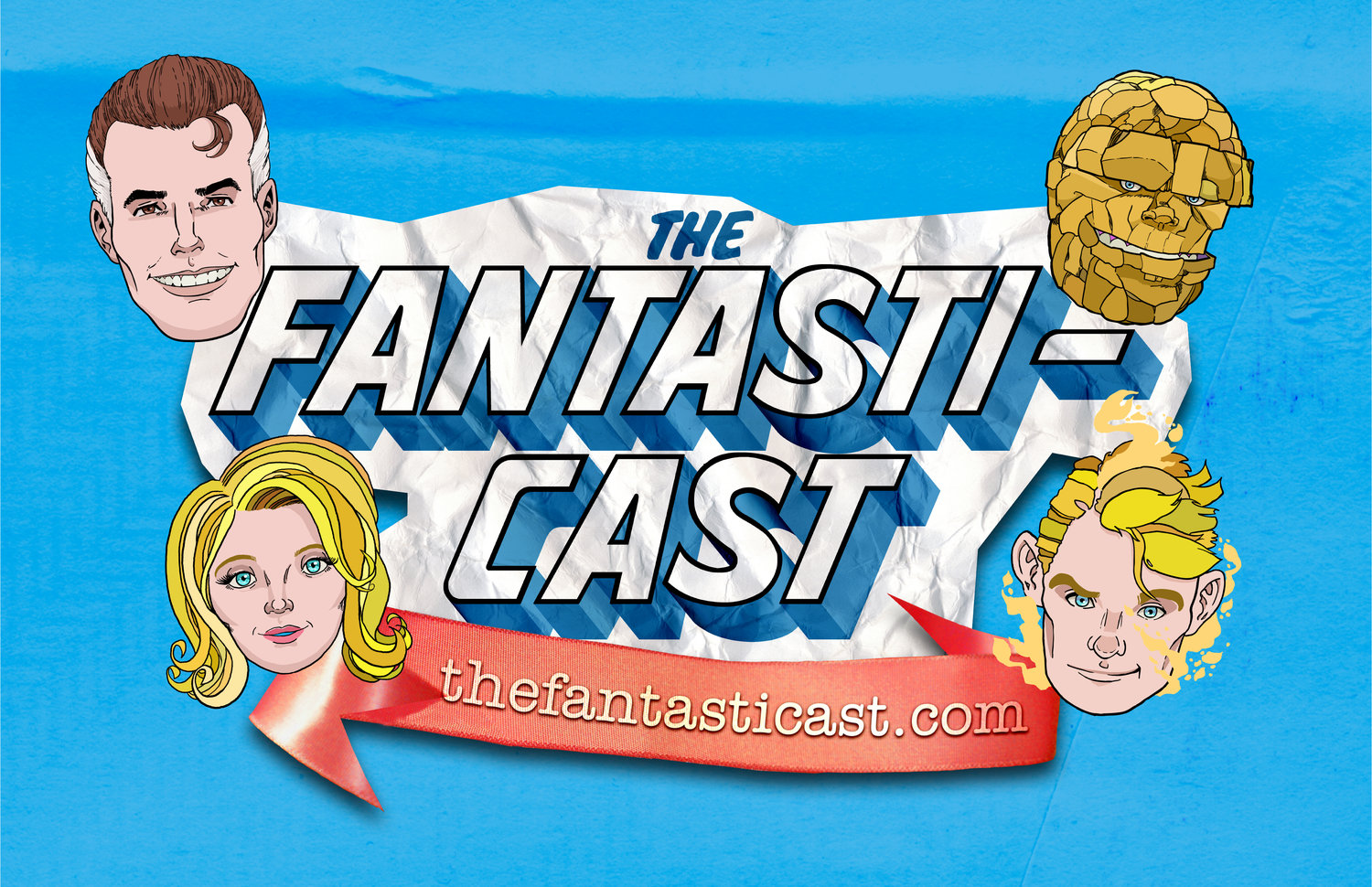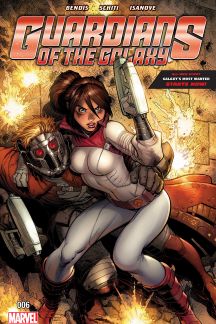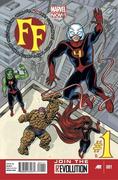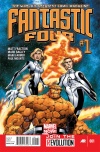Ah, comic reviews. We tried this a few years ago, back when the Matt Fraction Fantastic Four and FF series launched. They weren't particularly enjoyable to write, and they never seemed to fit too well with the focus the site had back then. A few years later, and the idea of checking in with a member of the Fantastic Four in the post-Secret Wars universe seemed to be a more attractive prospect. So, we put this new feature in as a Patreon milestone goal. Our supporters then backed us to that milestone, and here we are.
The conclusion to Secret Wars handily removed Reed, Sue and the Future Foundation from the Marvel Universe, setting them up to recreate the Multiverse. Johnny Storm joined the Inhumans books, as well as appearing in Uncanny Avengers, whilst Ben Grimm found himself in outer space, a member of Brian Michael Bendis's Guardians of the Galaxy.
As has been mentioned on the podcast, I really couldn't care about the ongoing efforts to make the Inhumans a central, viable concept in the Marvel Universe, which is why I'll be focusing these reviews on the Guardians of the Galaxy series. It's an uneasy compromise, as many years of reading Bendis's Avengers comics have left me exceedingly sceptical when it comes to his writing of team books. I'm also a huge fan of the Abnett and Lanning version of the book, especially the characters that never made it past the end of The Thanos Imperative into the Marvel NOW title, namely Mantis, Adam Warlock, Nova and Cosmo.
(I need to mention this at the top of the review, because I do have a bias against this title for these reasons. I'm open to being surprised by the book as it develops - I've only read the first issue - but I'm entering with low expectations.)
The basic plot of this issue has the Guardians - Kitty Pryde as Star Lord, Drax, Rocket Raccoon, Groot, Venom and The Thing - steal something from the Chitauri, realise that they don't know what they've stolen, then take it to Spartax to show off to former Star Lord-turned-reluctant-galactic-emperor Peter Quill. Before any questions can be answered, a badly beaten Gamora arrives, followed by a mysterious figure called Hala.
It probably won't surprise seasoned Bendis readers to discover that not a lot happens in this issue. Nominally, we're supposed to be concerned with the never-mentioned eight-month gap between the end of Secret Wars and the start of this issue, in which Ben has moved out to space, and Kitty had become Star Lord in the absence of her partner. Following a brief prologue with Annihilus, we open with Ben and his internal monologue, and the warning bells are ringing rather loudly at this point.
The Thing has an exceedingly recognisable voice. He is gruff, full of heart, prone to exaggeration and, most notably, he has an accent. It can be overplayed at times, but his is one of the most identifiable in comics. It's puzzling why Bendis, one mis-used everlovin' aside, never attempts to capture that voice and let Ben be Ben. The same can be said of Drax, whose most notable contribution to the comic is a ridiculous run-on sentence that is completely at odds with any portrayal of the character in comics or film prior to the Bendis era.
It's only Rocket Raccoon who gets to have any form of individual expression in the book, with written dialect, affectations and accents. (of course, there is Groot, but we all know his deal). Venom all-but disappears after the splash page introducing the team, and Kitty suffers from confused motivations - she seems positively enthusiastic at the thought of visiting Peter on Spartax, only to give him the cold shoulder as soon as they meet.
The page where Kitty persuades Rocket to go to Spartax is particularly troubling from an artistic perspective. The gimmick is that she nudges Rocket with her expressions, letting him come to the reluctant conclusion that she is right. It's really let down by Valerio Schiti's artwork, which chooses to have Kitty act out some elaborate, exaggerated pantomime. It's the kind of comedy that former GotG guest-artist Kevin Maguire would have excelled at, nuanced expressions playing out across the page as Rocket's realisation dawns. Instead, it's played far too broadly.
Elsewhere, Schiti's artwork, with colours from Richard Isanove, works much better. He's got a good line in space action, working well with the space-snakes from The Avengers movie. Some of the storytelling could be clearer - I'm not sure how Kitty went from some weird ballet moves in space to blasting through the Chitauri snake at high speed - but there are a lot of great visuals at play in this book.
I want to finish by returning to Ben's internal monologue at the start of the issue. A key point of his monologue, which is framed as his reasoning for joining the team in the aftermath of Secret Wars, is that he's finally made it out into space. I struggle with taking this angle with Ben. He's made it out into space many times, including four times in the first two years and an extended period in the Matt Fraction run. Maybe this is a hint that the new history of the Marvel Universe features a lot less of the Fantastic Four than before, but at the moment, it's a big sticking point.
This isn't a particularly bad issue, for all the time I've spent focusing on the things that didn't work for me. At the same time, this isn't a particularly engaging issue. The tease with Annihilus at the start of the issue works really well for me - I'm a huge, unapologetic Annihilus fan - whilst the rest of the issue chugs along without ever really getting me involved in what's going on. Hopefully things will pick up with the second issue, with the Chitauri artifact becoming more than the very obivous MacGuffin it currently is.
So, the Guardians of the Galaxy have arrived in the All-New, All-Different Marvel NOW era. I'll be coming back in a couple of weeks to look at issue 2, then we'll be running weekly reviews until we catch up with publication.
Until I catch-up to month of publication, I'll be able to refer to the sales charts to take a look at how well this book is performing. Guardians of the Galaxy #1 was 9th on the sales charts for November 2015, the 5th-highest ANAD launch. Sales in North America were estimated to be a little over 118,000. The credits page lists 7 different covers for this issue, which has a notable impact on the number of copies sold.
A final note about the comments. I have no idea if there will be any or not - this is the first original content being published on the new website outside of the podcast - but please try to keep the comments spoiler-free for future issues. I'd really like to be able to take each one on its own terms!










